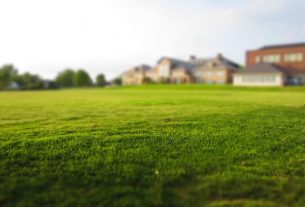Lawn Care and Landscaping thrives with balanced fertilization (nitrogen, phosphorus, potassium) tailored to grass needs, applied seasonally, and using slow-release or quick-release fertilizers. Effective weed control, integrating strategies like pre-emergent herbicides, organic matter, and hand-weeding, prevents nutrient diversion, promotes grass germination, and maintains long-term lawn health, enhancing aesthetics and saving resources for professionals.
Transform your lawn into a lush, vibrant oasis with expert guidance on lawn fertilization and weed control. In this comprehensive guide, we delve into the essentials of nurturing your yard. From understanding the intricacies of lawn fertilization—including choosing the right nutrients for optimal growth—to implementing effective weed control strategies, you’ll discover proven techniques to achieve a healthy, thriving landscape. Integrate these practices for seamless management, ensuring your lawn stands out as the envy of the neighborhood.
- Understanding Lawn Fertilization: Choosing the Right Nutrients
- Effective Weed Control Strategies for a Healthy Yard
- Integrating Fertilization and Weed Management for Optimal Lawn Care
Understanding Lawn Fertilization: Choosing the Right Nutrients

Fertilization is a crucial aspect of lawn care and landscaping, as it provides the essential nutrients for a lush, green, and healthy lawn. Understanding what and how much to apply is key. Different grasses have varying nutritional requirements, so identifying your lawn’s specific needs is the first step. Nitrogen, phosphorus, and potassium are the primary macronutrients that support grass growth, with each playing a vital role in various physiological processes. Balanced fertilizers, which contain these nutrients in roughly equal proportions, are commonly used to promote overall plant health.
Choosing the right fertilizer involves considering factors like your lawn’s age, climate, and existing soil conditions. Young lawns may require higher nitrogen levels for rapid growth, while established lawns might benefit from a balanced approach. Weather conditions also impact nutrient needs, with fertilizers applied in spring and fall often being most effective as they align with natural grass growth cycles. Additionally, understanding the difference between slow-release and quick-release fertilizers allows for tailored applications to maintain optimal lawn care practices.
Effective Weed Control Strategies for a Healthy Yard

Effective weed control is an integral part of lawn care and landscaping, ensuring your yard remains a lush and inviting space. The first step in achieving this is to understand the types of weeds prevalent in your area and their life cycles. Pre-emergent herbicides can be applied before weeds sprout, while post-emergents target existing weeds. Combining these with proper watering and mowing practices creates an environment that discourages weed growth.
Additionally, maintaining a healthy lawn through regular fertilizing and adequate sunlight exposure weakens weeds’ ability to thrive. Incorporating organic matter like compost into your soil improves its structure and fertility, further suppressing weeds. Hand-weeding for smaller areas or specific types of weeds is also an eco-friendly option that promotes precision control, ensuring targeted removal without harming the lawn.
Integrating Fertilization and Weed Management for Optimal Lawn Care

In the realm of lawn care and landscaping, integrating fertilization and weed management is a game-changer for achieving a lush, healthy green space. Effective lawn care involves a strategic approach that considers both elements simultaneously. Fertilization provides essential nutrients to nourish grass roots, enhancing its overall growth and resilience. However, without proper weed control, these nutrients can be hijacked by unwanted vegetation, leading to uneven growth and an unsightly yard.
Weed management strategies, such as targeted herbicide applications, play a crucial role in complementing fertilization efforts. By removing weeds at the root, these methods allow fertilizers to work more efficiently, ensuring that grass seeds germinate and thrive without competition. This integrated approach not only promotes healthier lawns but also saves time and resources in the long run, making it a fundamental practice for any dedicated lawn care professional.
In the realm of lawn care and landscaping, proper fertilization and weed control are essential components of a lush, vibrant yard. By understanding the critical role of nutrients in plant growth and implementing effective strategies for managing weeds, homeowners can achieve a beautiful, healthy lawn that stands out in the neighborhood. Integrating these practices ensures optimal results, allowing your lawn to thrive while keeping unwanted plants at bay. With consistent care and attention, you’ll enjoy a thriving outdoor space that becomes the envy of all folks who admire its beauty and integrity.



